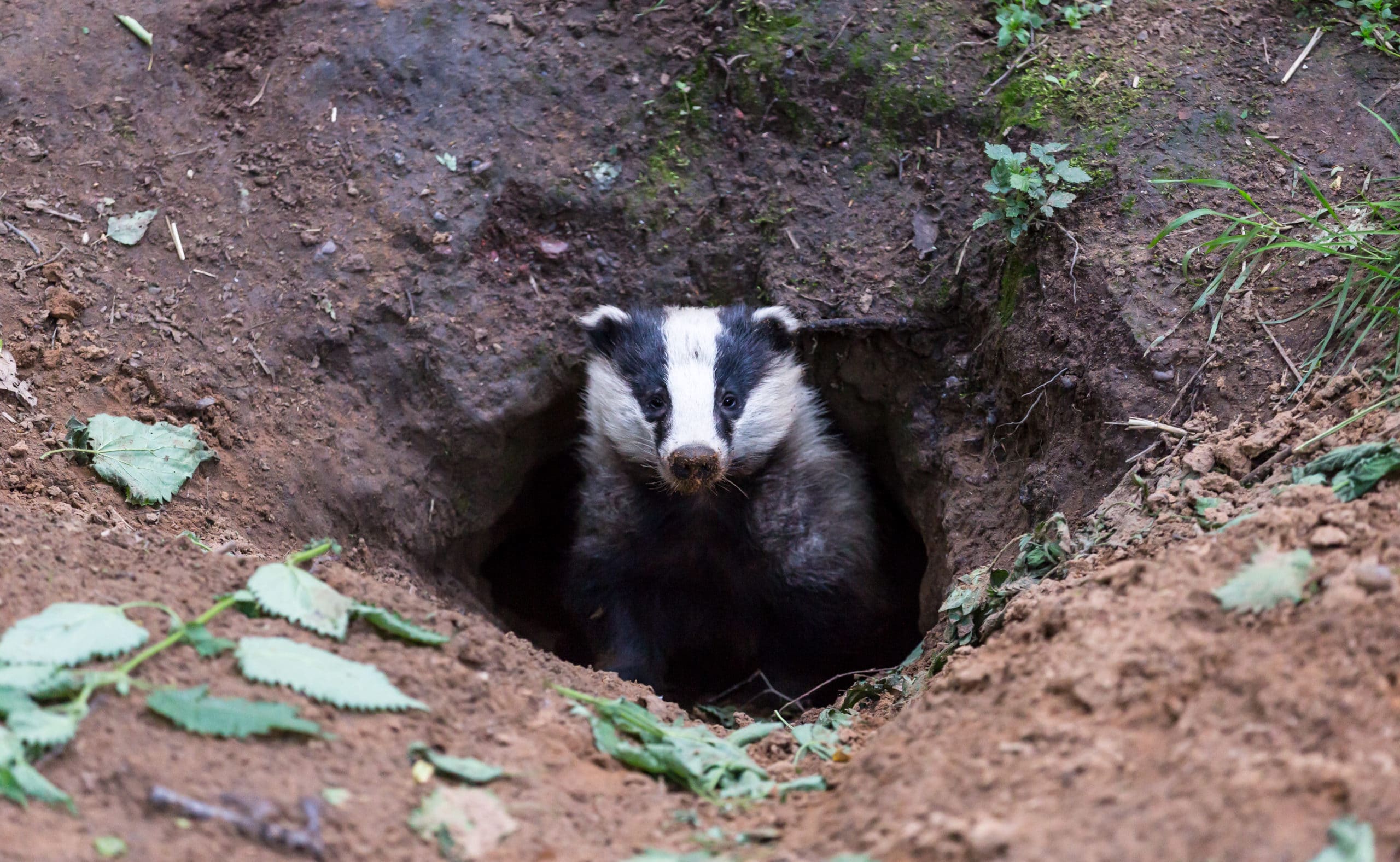Badger Surveys for Development
Why are Badger Surveys Required?
The Protection of Badgers Act 1992 provides protection for badgers and their setts. Under this legislation, it is therefore illegal to disturb a badger while using its sett, or to damage, destroy, or obstruct access to a sett. As badgers are a protected species, badger surveys will be required for a licence application or planning applications if there are signs of badgers in and around the development site.
A badger survey will determine whether there are badgers present on the site or nearby. If the species is found in or around the development site, mitigation plans should be put in place to compensate for or reduce the negative impacts to badgers and their setts.
Natural England have set out guidance to surveys and mitigation of badgers for development sites.

When to Survey for Badgers
If there is evidence of badger activity close to a development site, or if there is a reasonable belief that badgers may be present, a badger survey should be carried out. Badger surveys should also be undertaken if historical or distribution records indicate that badgers are active in the area, or the area is suitable for sett building.
Surveys should take place before any planning application is submitted, and badger surveys can generally be carried out throughout the year. The best time to survey for badgers is between autumn and late winter, to early spring as badgers are active during this time, and vegetation is low.
Signs of Badger Activity in an Area
When undertaking a survey, an Ecologist will look for a number of indicators and field signs which point to badgers being active in an area. If evidence of a sett is found, they must also find out whether the sett is in use. A sett will be protected, even if it is not occupied, if there are signs of badgers close by. Some of the signs an Ecologist looks out for include: sett entrances; large heaps of soil outside sett entrances; badger paths; dung pits; footprints; and scratching posts.
Types of Badger Surveys
The types of badger surveys which can be undertaken to detect badger activity include a standard badger survey and a badger bait marking survey.
Standard Badger Survey: In certain circumstances, data may be obtained from local badger groups to determine if the species is present in the wider area, and considering local record centres can be a first step in a standard badger survey. This will help to obtain any records and information on badgers in the area.
A standard badger survey involves recording any signs of badgers, such as setts, paths, or footprints. If a badger sett is discovered, monitoring of the sett may be required to find out if it is being used by badgers.
Badgers may be observed around their setts and night using infra-red video surveillance technology. This can provide evidence of badgers, as well as giving an estimation on population sizes.
Badger Bait Marking Surveys: Badgers use dung pits to mark their territories. This is useful to Ecologists as it can help us to determine the territorial boundaries of badger social groups through use of badger bait marking surveys. Using a combination of peanuts, syrup, and harmless, indigestible plastic pellets as bait, placed close to badger setts, we can gain an understanding of the extent of a badger clan’s territory.
The plastic pellets placed at each sett are different colours, which will be visible within the badger’s droppings, providing us with an understanding of these social groups by examining the coloured pellets in the dung pits.
How Long are Badger Surveys Valid for?
Badgers can quickly colonise sites, due to their ability to rapidly excavate new setts. Therefore, an updated survey should typically be undertaken immediately before construction works commence to determine if any new badger setts have been created. If a development project is extended in time or scope, the survey may become invalid, and periodic updates may be required.
For medium to long term projects, we would recommend that re-surveys should be undertaken at certain intervals to avoid breaches of the Protection of Badgers Act.
How to Organise A Badger Survey
A badger survey should be conducted by a qualified Ecologist with the appropriate licences. The Ecologist will usually conduct the survey, then provide a report detailing the results. If the results of the survey show evidence of badgers, required mitigation techniques will be set out in the report.
How Can Collington Winter Environmental Assist?
Collington Winter Environmental are an experienced team of Ecologists, providing a highly professional badger surveys service to developers on all types of projects. Our Ecology Director, Olivia Collington, holds Natural England Badger Survey and Mitigation licences, and has worked with protected species across the UK, undertaking field surveys and writing scientific, readable reports for submission at planning.
We adopt a pragmatic approach to all sites, working with clients to find solutions and develop relationships. With current offices located in Greater Manchester and Dumfries, the team are well served to work nationwide. Over the years, we have built strong relationships with key stakeholders across the UK.
Please get in touch with our Ecology Director Olivia Collington (Olivia.collington@collingtonwinter.co.uk) for more information on protected species surveys (such as in relation to Bats or Great Crested Newts) and mitigation. We also provide ecological appraisal and assessment services.
Contact Us
Registered Address
23 Bark Street East, 1st Floor, Bolton, BL1 2BQ
Cambridge Office
Future Business Centre, Cambridge Campus, Kings Hedges Road, Cambridge, CB4 2HY
Leicester Office
Rutland House, 23-25 Friar Lane, Leicester, LE1 5QQ
Bristol Office
Newminster House, 27-29 Baldwin Street, Bristol, BS1 1LT
Telephone
Head Office: 01204 939 608
Dumfries Office: 01387 378208
